What is Street Art?
"Street art" is the collective term for urban art in public spaces and on the street. Street art is much more than just graffiti. Urban art encompasses various styles and techniques, including:
- Graffiti refers to motifs and drawings that are applied to various surfaces with spray cans or brushes and paint.
- Bombing is when street artists exhibit their artworks in as many places as possible within a short period of time.
- The artists' abbreviations or pseudonyms are called tags - these are placed directly under the works or stand alone.
- Murals are elaborate and large-scale wall paintings that often cover the facades of entire buildings.
- In a 'décollage', new street art works are created by tearing off the layers on billboards.
Street art works are often created in a spectacular and spontaneous way - often with permission, sometimes not. Urban art is not immortal, it lives. Not infrequently, the works are revised or disappear then reappear in a different form and place.
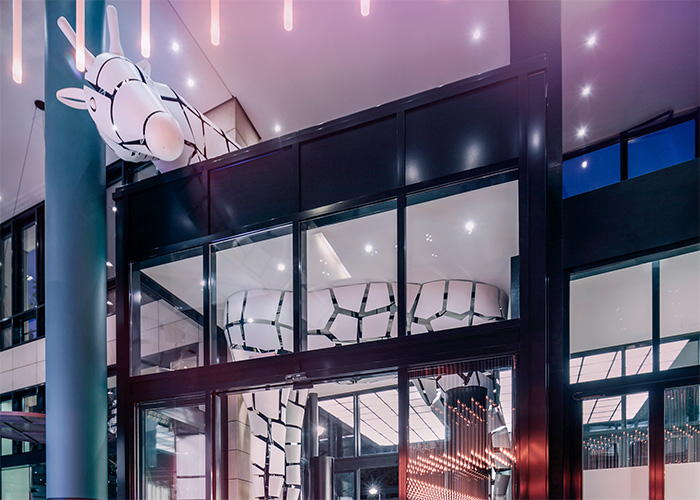
Urban art all over Berlin
No matter where you look, the cityscape is characterized by colorful murals, large posters or eye-catching graffiti. Numerous street artists have immortalized themselves in different parts of the city. Probably the most popular place in Berlin for graffiti is the "East Side Gallery". It is the longest still visible remnant of the former Berlin Wall. This piece of street art art includes around a hundred colorful drawings by artists from all over the world. They all have the same goal: to create urban art that embodies peace and unity after the end of the Cold War.
Less touristy but just as impressive urban art can also be found in other parts of Berlin. The Pullman Berlin Schweizerhof offers the ideal starting point for your stroll through the city. You can already collect your first inspirations right at the hotel: In the entrance area you will be greeted by a futuristic art installation of a life-size giraffe!
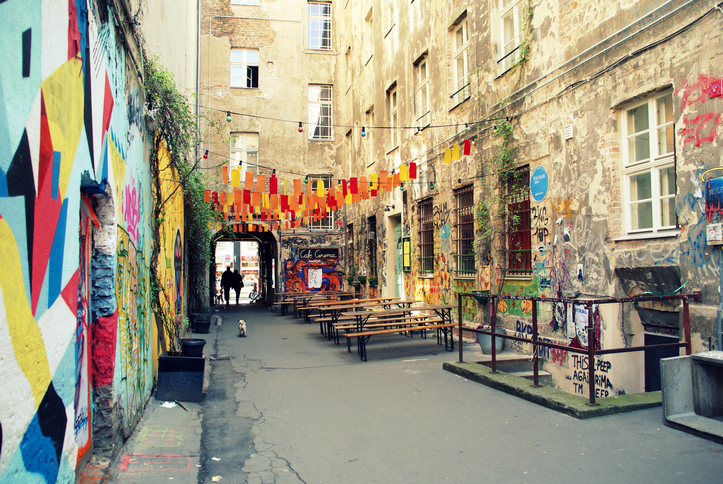
Go exploring either on foot or by bike and discover street art in Kreuzberg, Mitte or Prenzlauer Berg. Every house wall and open space becomes a canvas for urban art. Haus Schwarzenberg in Berlin-Mitte is one of the most unusual street art locations. There are also examples from well-known artists to enjoy between Rosenthalerstrasse and Schönhauser Allee - including British street artist Banksy.
At the border to Kreuzberg, the colourful messages are far from over. On the contrary: Most street art is located in Kreuzberg. Entrances to underground stations, courtyards or entire building facades also serve as canvases. A prime example is a huge mural that can be admired on Oranienstrasse: This piece of urban art shows an oversized faceless astronaut. There is no face visible behind his helmet, just a black surface. This piece of art in Berlin was created in 2007 as a reference to the Cold War. "Astronaut/Cosmonaut" by artist Victor Ash covers an entire wall of the house.
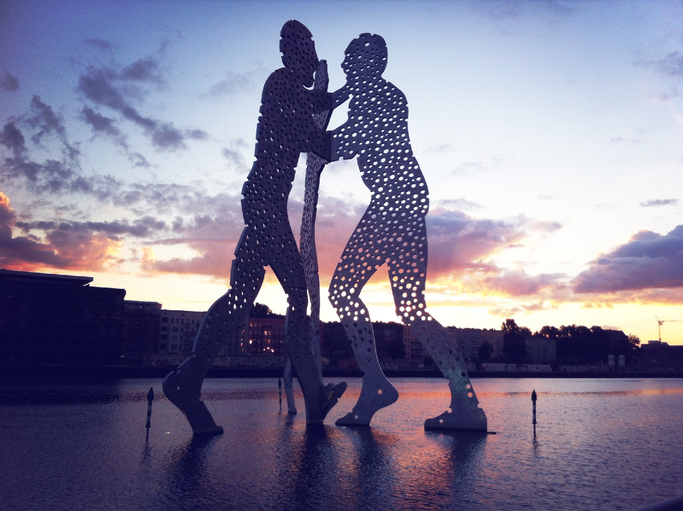
Urban art in the middle of the Spree
As already mentioned, urban art is not necessarily related to graffiti. Do you know the “iron three on the Spree”? This is a 30-metre-high sculpture made of aluminium: the Molecule Man. This impressive water sculpture was created by American sculptor Jonathan Borofsky. The holes in the plates are supposed to represent molecules that make up all human beings. The Molecule Man can be found in the Treptow district between Oberbaumbrücke and Elsenbrücke. It marks an intersection between former East and West Berlin. The central location and great view of the Treptowers complex are ideal for taking a stroll along the banks of the Spree - especially in the evening at sunset.
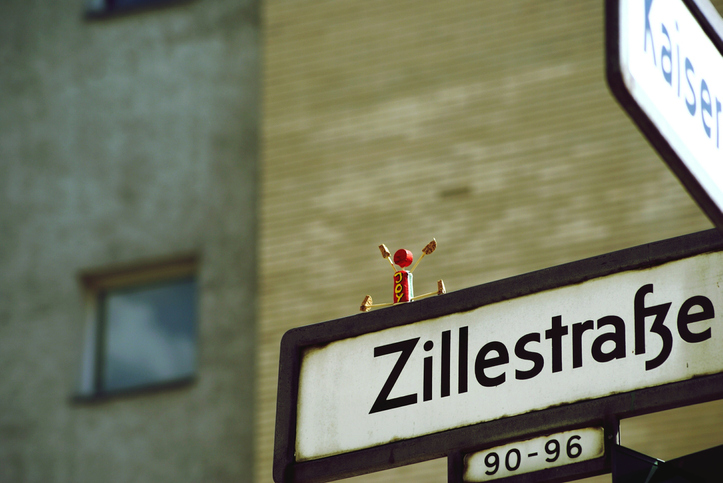
Urban art on street signs
Have you ever heard of little cork men or street yogis? These are small figures, barely the size of a hand, installed on street signs, traffic lights or streetlights. If you look closely, you will find these street art figures in many places around the city. These cork figures have been spotted since 2009. There are apparently more than 1000 in total. Those in the know will be aware of the downward-facing dog, the goddess or a variation of the warrior pose. The Street Yogis originate from the Berlin sports trainer Josef Foos and are meant to bring joy and happiness to those who discover them.
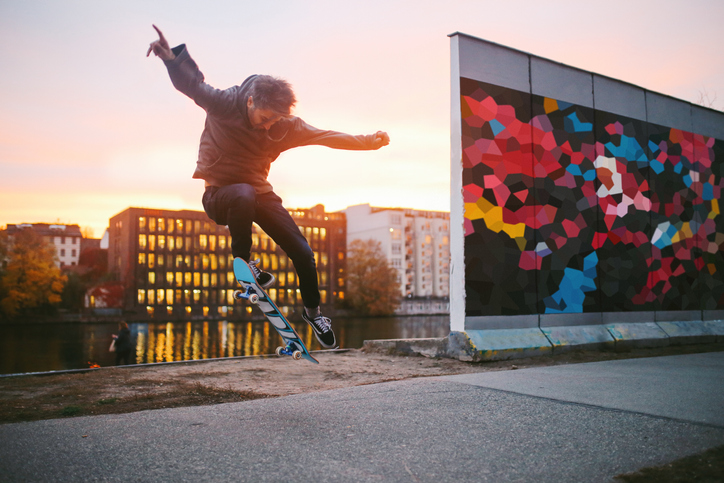
Berlin isn’t remotely drab and grey: Berlin is pure diversity. Urban art inspires both art lovers and the curious who want to explore art in Berlin off the typical tourist track. There are still many untouched spots that would look fantastic with a little colour. Maybe you'll discover the next piece of graffiti or mural while wandering through the art metropolis?

